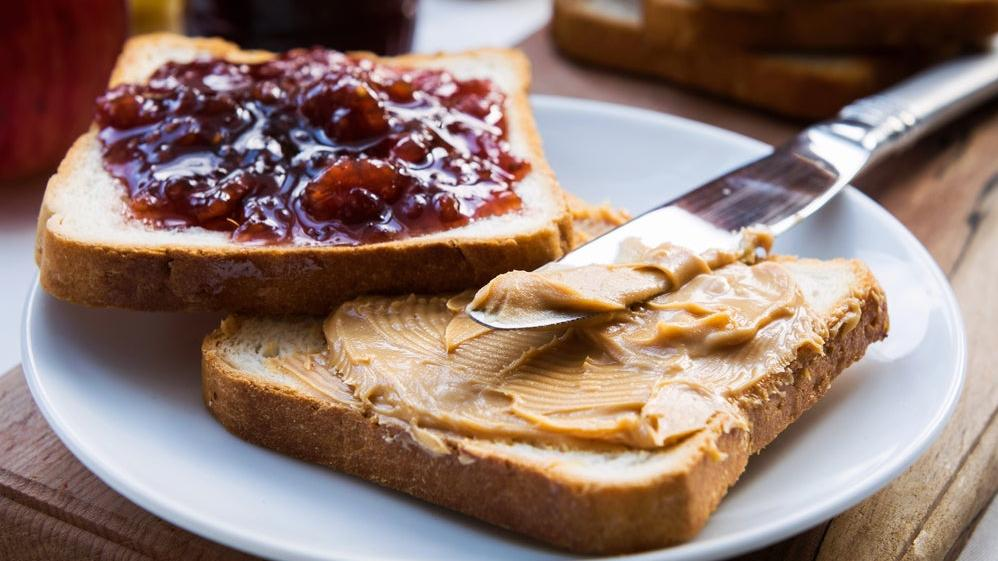How To Properly Recycle Your Peanut Butter Jars
America's condiment leaves behind an oily mess—here's how to clean and recycle those jars.
My household, I am confident, goes through far more peanut butter than the average family. Though we are a family of only two, we extinguish 40-oz. jars of Jif and Skippy nearly faster than we can plan trips to the grocery store. I won't go long on peanut butter's many virtues here; instead, I'll just say that for all my rabid consumption of this perfect product, I'm never 100% sure I'm disposing of the jar properly.
As we've covered in the past, most plastic peanut butter jars have a frustrating design. The mouth is too small to reach into with your knife when the supply is low, and the tapered rim near the top, narrowed to strengthen the plastic and hold up against repeated lid twisting, is hard to scrape excess peanut butter from. Once the jar is totally empty, it's never really empty; peanut butter sits in every nook and cranny of the nook-and-cranny-filled interior. Can you just cut your losses and recycle the jar in this state?
Are plastic peanut butter jars recyclable?
The most common peanut butter jars are made of #1 polyethylene terephthalate, or PET. This is an easily recyclable plastic, and every local program ought to accept them—provided they're as clean and dry as possible.
Peanut butter is tricky to clean off of surfaces because its oil content means you have to melt it off as much as you have to wash it off. Using hot water should get you most of the way there, but remnants will inevitably remain; try a good scrape with a rubber spatula to remove the biggest clumps. (To reach down into the jar, you can push a sponge around the bottom with a fork and then use it to fish the sponge back out again.) To assist the removal, you can also fill the jar with hot water and a little soap, screw the lid on, then give it some good shakes to distribute the soap before scrubbing.
How clean does the peanut butter jar have to be while recycling?
It's not like the inside of the jar has to be squeaky clean, nor does it have to be washed to the point of being food safe—but it should be largely free of visible streaks of peanut butter. Scrape out the last bits with a spatula after rinsing. Most importantly, it should be dry; let it drip dry in the sink so that it's free of liquid by the time you chuck it in the bin.
Liquid is the enemy of the recycling process. Oil in particular can contaminate every other substance in the stream, particularly cardboard and paper, which absorb the liquid and can no longer be repurposed. This is also why it's important to keep bins lidded outside, so that rain doesn't render your items unusable.
Whether the lid of the jar should be included when you recycle can vary by whatever system your area uses to process recyclable material. The lid is often composed of a different type of plastic, which may not be recyclable. Or, it's made of the proper plastic but is too small to be of value. Whenever it's encouraged to recycle plastic lids, the requirement is that they're twisted onto the jar, rather than being added to the recycle bin separately. This is as much about the lid's recycle potential as it is about keeping other recycled materials safe from the oily interior of your peanut butter jar. Like we said, dryness is key! We recommend calling your local sanitation department for the guidelines specific to your area.
Long story short, just put in a little effort. Nothing needs to pass the white glove test when you recycle, but it should be able to enter the stream without contaminating the items around it. I usually let a few empty jars stack up in the pantry, then scrape and wash them all together when I have a few spare moments in the kitchen. You might want to toss the jar to the dog and let them finish it off, but avoid this temptation, as it can lead to suffocation! That said, a few licks of the rubber spatula never hurt.
